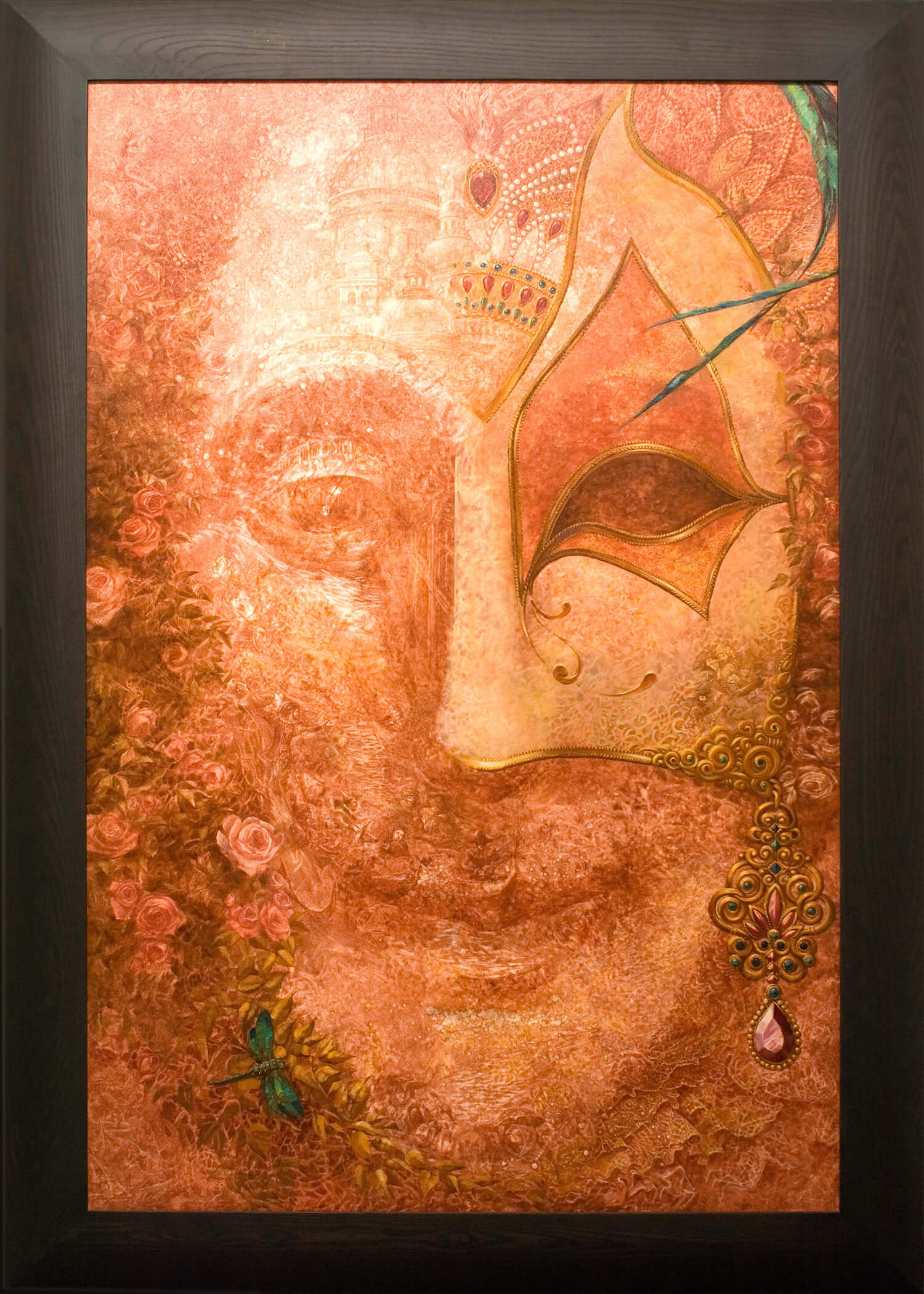The republic of Venice epitomised artistic refinement. Sumptuous and luxurious, it was a society of facades and masks, a treasure trove of artistic achievements, happy pleasures and romance, but underpinned by much sadness.

This is what the artist sets out to depict in her painting of Venetian culture and uses the metaphor of Venetian masks to reveal the truth of one of the greatest city-states. Venice, in the artist’s imagination, is a woman’s face, part covered with the mask. It was jewelled with precious stones of rubies, emeralds, and sapphires set in gleaming gold, staging a history of Venice’s accomplishments.
This is what the artist sets out to depict in her painting of Venetian culture and uses the metaphor of Venetian masks to reveal the truth of one of the greatest city-states. Venice, in the artist’s imagination, is a woman’s face, part covered with the mask.
In her reminiscence of Renaissance-era Venice, the artist captures the city-state’s golden years and the sense of civilisation at a crossroads. Reds, russets and saffron, together with dazzling fireworks and jugglers are used to depict a culture that was in full bloom, but rapidly wilted only a couple of centuries later. It’s a poignant contrast: roses blossom around the face, whose eyes hold an empty gaze through which one can grasp the floating city and the gondola crossing the Grand Canal under the bridge.
Venetians used masks as a disguise to lose their inhibitions at Carnevale; people of all kinds co-mingled and celebrated aided by the anonymity. Venice was a self-indulgent culture, one that delighted in its love of the sensual, the artistic and hedonistic. The artist delicately renders the Venice of grand palaces and gondolas, street musicians and celebrations, within the skin of the painting. It is a lavish celebration of music, dance, art, and architecture; but overlaid with a melancholy sense of nostalgia.
It was jewelled with precious stones of rubies, emeralds, and sapphires set in gleaming gold, staging a history of Venice’s accomplishments.
In her reminiscence of Renaissance-era Venice, the artist captures the city-state’s golden years and the sense of civilisation at a crossroads. Reds, russets and saffron, together with dazzling fireworks and jugglers are used to depict a culture that was in full bloom, but rapidly wilted only a couple of centuries later. It’s a poignant contrast: roses blossom around the face, whose eyes hold an empty gaze through which one can grasp the floating city and the gondola crossing the Grand Canal under the bridge.
Venetians used masks as a disguise to lose their inhibitions at Carnevale; people of all kinds co-mingled and celebrated aided by the anonymity. Venice was a self-indulgent culture, one that delighted in its love of the sensual, the artistic and hedonistic. The artist delicately renders the Venice of grand palaces and gondolas, street musicians and celebrations, within the skin of the painting. It is a lavish celebration of music, dance, art, and architecture; but overlaid with a melancholy sense of nostalgia.

